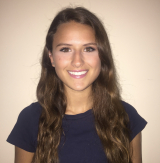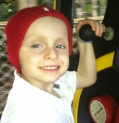Germline Findings in Hereditary Retinoblastoma

Background
Retinoblastoma is the most common intraocular tumor of childhood, with 1 in 16,000 children affected, usually before the age of 2. Many patients with retinoblastoma have a mutation in the gene RB1 that runs in their family and makes them more likely to develop bilateral retinoblastoma and other cancers. Different mutations in RB1 may carry different risks of retinoblastoma and investigating the relationship between specific mutations (genotype) and the severity and presentation of retinoblastoma (phenotype) is important to classify in the patient population at CHOP, one of the largest cancer centers in the United States. Additionally, there are some children with retinoblastoma who have signs of hereditary cancer risk (such as bilateral disease or affected family members) who do not have a mutation in RB1.
Project Goal
The second half of this project will involve identifying these patients and recruiting their families onto a wider Cancer Predisposition Registry to allow further study of their genetic information. If DNA remains at Penn from their initial testing and the family consents to involvement, she will conduct further testing to uncover other possible genetic changes related to retinoblastoma.
Mentored by Dr. Garrett Brodeur
Children’s Hospital of Philadelphia, Philadelphia, PA

